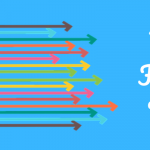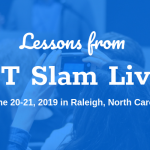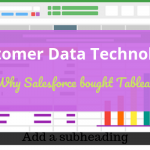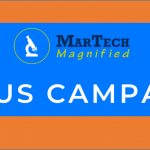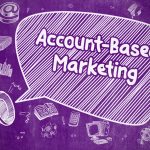
5 Steps to Great User Personas for More Agile Marketing
Time to Read: 3.5 minutes
The other night, we talked about Agile Marketing and Product Ownership. Admittedly, it’s an edgy topic – for even fairly technically inclined marketers. Now nearly 10 years old, Agile is the established framework for IT product development. Designed to keep a laser-focus on customers (a.k.a. user personas), Agile means:
- Flexible response to change rather than making and following rigid, detailed plans
- Rapid, small, and well-defined actions replacing long projects
- Tight, cross-functional collaboration supplanting hierarchy and silos
- Valuing individuals and interactions over processes and tools
- Striving for continual improvement over time
In recent years, Agile changed a product manager’s job quite a bit. It’s also now changing marketing, as the “marketing plan” mentality gives way to a “data-driven sprint” one.
During the discussion with panelists from both IT and marketing — it became clear that great marketing and great product development share a foundation. Neither marketing nor can do their jobs without high quality user stories, detailed user personas and customer journey mapping.
A DC Marketing Tech Talk panelist specifically said companies needed primary market research.
However, primary market research can still be far too slow. Yes, it’s true that the best and most reliable personas are rooted in a traditional market segmentation project. Yet, you have to collecting survey data, large samples, and advanced analytics to segment the market based on values and beliefs. It’s not compatible with Agile development and marketing.
How to Quickly Do User Persona Research
Let’s take a look at the typical business that follows Agile- a SaaS app. Digital apps have loads of user behavior data, marketing automation data, CRM data, and user stories. While some data is higher quality than others, they all make up pieces of the puzzle. So, why not pull of these valuable sources together?
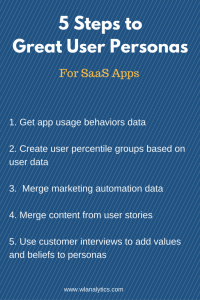
Instead of values-based market segmentation, start by segmenting based on the one behavior everyone cares about the most – app usage.
Using app usage data, then create percentile groups. Let’s call these percentile groups broad user personas.
The top 5%, Power Users, use the majority of the service. They use all features and functions and they use the app all the time. Next come the Fast Followers, the 15% that use the app a lot. Fast Followers use your app in highly different ways, along with using a wider variety of features and functions.
The following 20% – they might use it still less, and tend to stick to a more limited feature set. The bottom 60% – as your customer success team already knows – don’t rely on your app nearly as much as you’d like.
Each broad user persona, is certain to be composed of sub-segments. By merging usage data with marketing automation data you can get a picture of the buyer journey.
Next merging in user stories to find customer need trends. From time to time, flesh out this picture with customer interviews to understand customer values and beliefs. Analyze these four data sources over time. Dig into the data at least quarterly. Together, you’ll see a clear picture of your customers – of where they’ve been, where they are, and where they’re going.
Remember that User Personas Research is.. on Users
Keep in mind that building user personas with internal data is NOT market research. It’s your installed base or customer research. It helps improve the customer experience and build loyalty. It does not look at the entire market. Only a time-tested, values and beliefs-based market segmentation model looks at the whole market. Until your digital app’s revenue grows large enough for this luxury, consider usage-based user personas. They are your most cost-effective and best bet.
Hey! Friends help friends grow by hitting those share buttons!


